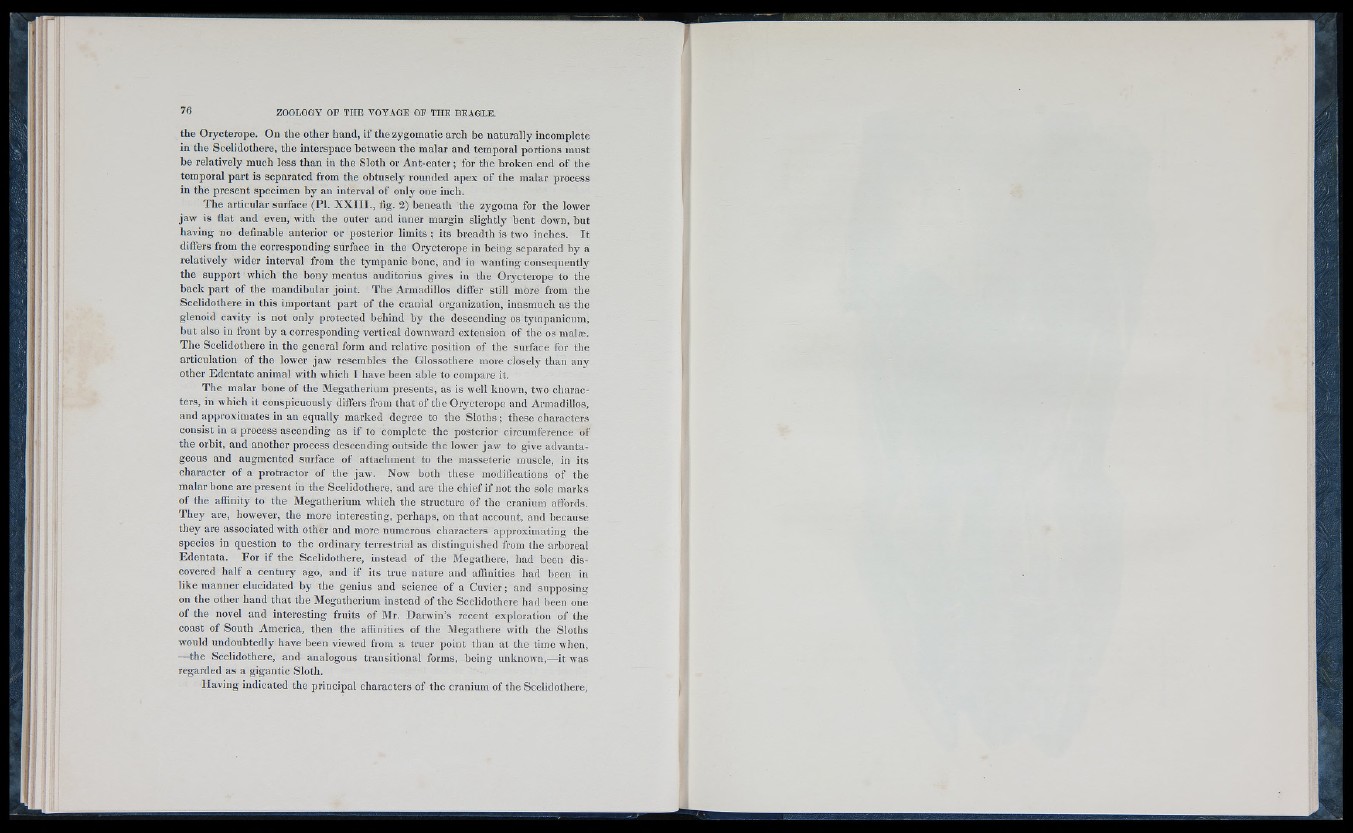
the Orycterope. On the other hand, if the zygomatic arch be naturally incomplete
in the Scelidothere, the interspace between the malar and temporal portions must
be relatively much le ss than in the Sloth or Ant-eater; for the broken end o f the
temporal part is separated from the obtusely rounded apex o f the malar process
in the present specimen b y an interval o f only one inch.
T he articular surface (PI. X X I I I ., fig. 2) beneath the zygoma for the lower
jaw is flat and even, with the outer and inner margin sligh tly bent down, but
having no definable anterior or posterior limits ; its breadth is two inches. It
differs from the corresponding surface in the Orycterope in being separated by a
relatively wider interval from the tympanic bone, and in wanting consequently
the support which the bony meatus auditorius gives in the Orycterope to the
back part o f the mandibular joint. The Armadillos differ still more from the
Scelidothere in this important part o f the cranial organization, inasmuch as the
glenoid cavity is not only protected behind by the descending os tympanicum,
but also in front by a corresponding vertical downward extension o f the os inalEe.
The Scelidothere in the general form and relative position o f the surface for the
articulation o f the lower jaw resembles the Glossothere more closely than any
other Edentate animal with which I have been able to compare it.
The malar bone o f the Megatherium presents, as is well known, two characters,
in which it conspicuously differs from that o f the Orycterope and Armadillos,
and approximates in an equally marked degree to the S lo th s ; these characters
consist in a process ascending as i f to complete the posterior circumference o f
the orbit, and another process descending outside the lower jaw to give advantageous
and augmented surface o f attachment to the masseteric muscle, in its
character o f a protractor o f the jaw. Now both these modifications o f the
malar bone are present in the Scelidothere, and are the ch ie f if not the sole marks
o f the affinity to the Megatherium which the structure o f the cranium affords.
Th ey are, however, the more interesting, perhaps, on that account, and because
they are associated with other and more numerous characters approximating the
spe cie s in question to the ordinary terrestrial as distinguished from the arboreal
Edentata. For if the Scelidothere, instead o f the Megathere, had been discovered
h a lf a century ago, and if its true nature and affinities had been in
lik e manner elucidated by the genius and scienc e o f a Cuvier; and supposing
on the other hand that the Megatherium instead o f the Scelidothere had been one
o f the novel and interesting fruits o f Mr. Darwin’s recent exploration o f the
coast o f South America, then the affinities o f the Megathere with the Sloths
would undoubtedly have been viewed from a truer point than at the time when,
—the Scelidothere, and analogous transitional forms, being unknown,—it was
regarded as a gigantic Sloth.
Having indicated the principal characters o f the cranium o f the Scelidothere,